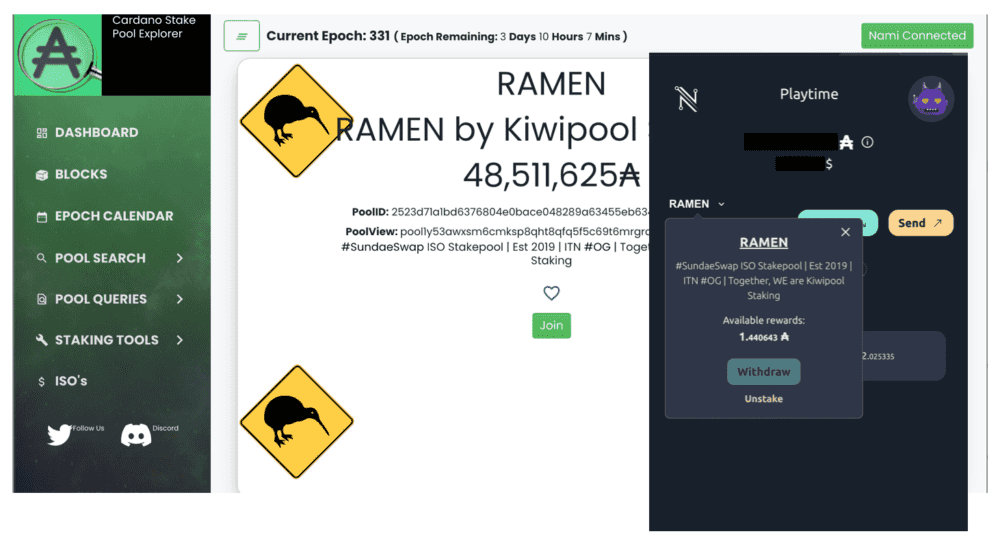When I first bought some ADA back in 2020, there were only two wallets to choose from Daedalus or Yoroi. I was new to crypto and chose Daedalus because I thought it was cool that the wallet itself runs a full node. The blockchain didn't have many transactions at that time, and loading the wallet didn't take long. It also allowed me to stake, which was a new thing for me. However, as the Cardano blockchain grew, loading the Daedalus wallet took longer and longer. Suddenly, the node-running function of the wallet went from being cool to a real drag.
The following year, NFTs exploded onto the scene, and all sorts of lightweight wallets emerged on the other chains. However, Cardano was still working on enabling smart contracts, and wallet choices remained few. After the smart contracts functionality went online and minting NFTs was a reality, three wallets popped up. It was CCVault, Nami and Typhon. They were like Yoroi, except they also had space for NFTs. Of the three, the first two are more well-known to the community. In this article, we're going to explore the capabilities of the Nami wallet. Perhaps after the exploration is done, we will be able to understand its popularity.
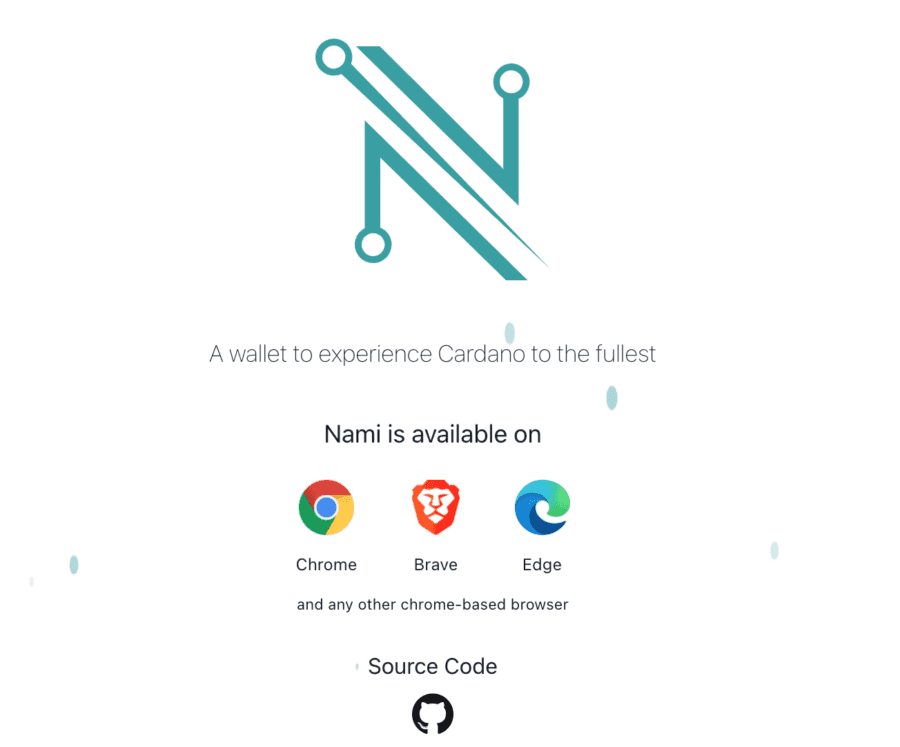
Overview
Nami Wallet is a non-custodial browser-extension wallet built for the Cardano blockchain. It only works with the Chrome-based browsers currently (sorry, Safari!). The source code for the wallet can be found on Github, where one can see the changes made to it. Aside from storing and sending both tokens and NFTs, it can also delegate ADA tokens to stake pools, mint NFTs and interact with smart contracts.
The wallet is created and maintained by a two-person team, Alessandro Konrad in Germany and Pascal Lapointe in Canada. Both run a Cardano stake pool called Berry Pool and created one of the earliest Cardano NFT projects, SpaceBudz, which was well-received by the Cardano community.
Alessandro is a Comp-Sci student studying in Munich. He started out working with Ethereum smart contracts, discovered Cardano, and got on the Cardano bandwagon, looking to bring his prior experience to the Cardano ecosystem. He even got interviewed by Charles Hoskinson, the founder of Cardano, to talk about SpaceBudz when it first launched.
Pascal is a software developer in front and backend web development and UI design. He is also available for projects as a freelancer and collaborates with Alessandro on the wallet and the stake pool.

Wallet Creation
Getting started requires downloading the wallet into the browser. Clicking on any logos will bring you to the associated website to download the app. Once done, there is a security message informing you that the extension will be able to "read and change all your data on all websites". This kind of wording might give some people a reason to pause. However, I take it for granted that there will be a certain level of data exchange between the wallet and, say, Sundaeswap, a DEX on Cardano. Will the wallet attempt to change any personal information from your Gmail or steal your passwords? Likely not. While the phrasing could be better, I would say I'm ok with the risk so far.
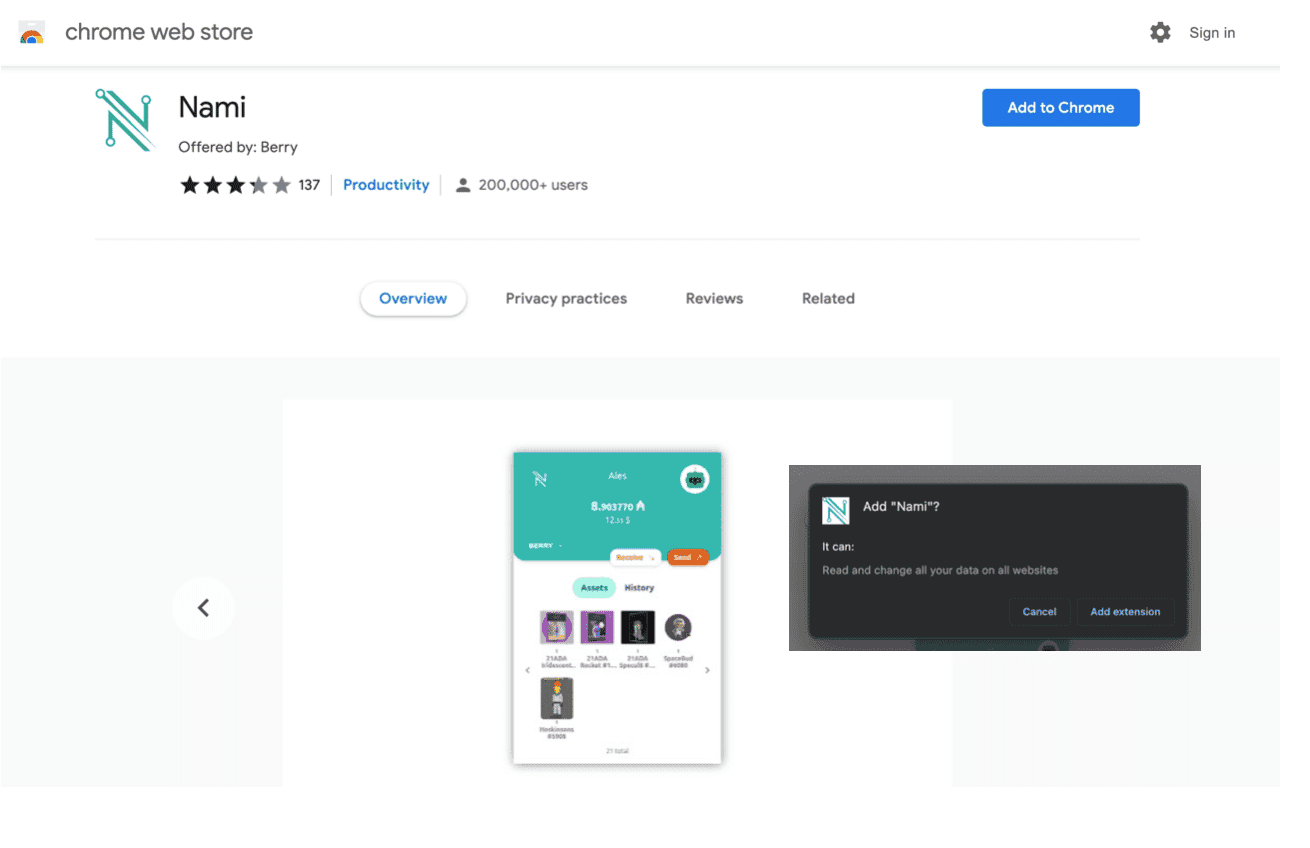
Creating a new wallet is a fairly straightforward process. Agree to terms and agreements, note down the seed phrase, confirm the phrase, create a new account, and you're done. A nice touch is the reminder to ensure no one is around when you're viewing the seed phrases.
If you choose to import from Daedalus/Yoroi, all you need to do is select the correct length for your seed phrase and key it in accordingly. However, there is a major caveat.
Of Wallets, Addresses and Sub-accounts
In Daedalus/Yoroi, you can set up multiple wallets. Each wallet has its own seed phrase. Within each wallet, you can have multiple addresses. With Nami, there is only one wallet and one address, but you can set up sub-accounts that are independent of each other. In this sense, the Nami wallet works like a bank account that has only one account but different savings goals that you can funnel money into.
If you use the Daedalus/Yoroi seed phrase in Nami and you have more than one wallet associated with it, Nami can only show you information for one wallet. And if within that one wallet, you have multiple addresses, Nami will only display one address. To prevent confusion, the best practice is to create a new wallet and send the funds over from Daedalus/Yoroi. For me, Daedalus is my ADA bank, and Nami is the wallet in my purse for everyday spending. Whenever I run out of money in Nami, I transfer funds from one to the other.
Funding the Wallet
Depositing funds into the wallet is simple. Clicking on the Receive button displays a QR code and the address, giving you the option to scan or copy/paste to the sending wallet, catering to both mobile app and desktop users. Nice! Funds don't take too long to reach the wallet, and the gas fees are cheap. Sending is easy, too, and you can enter an address, a handle or via Milkomeda, a side-chain on Cardano that brings EVM compatibility to the Cardano network.
 Main Page
Main Page
After receiving funds, the ADA is displayed on the main page under the stacks of coins icon. For those of you who do a lot of trading on Sundaeswap or even participate in MELD, all those tokens will be listed here. The little Gameboy icon is where the NFTs are stored. The third icon that looks like a clock is for your transaction history, which also has some cute icons to indicate the type of transaction.
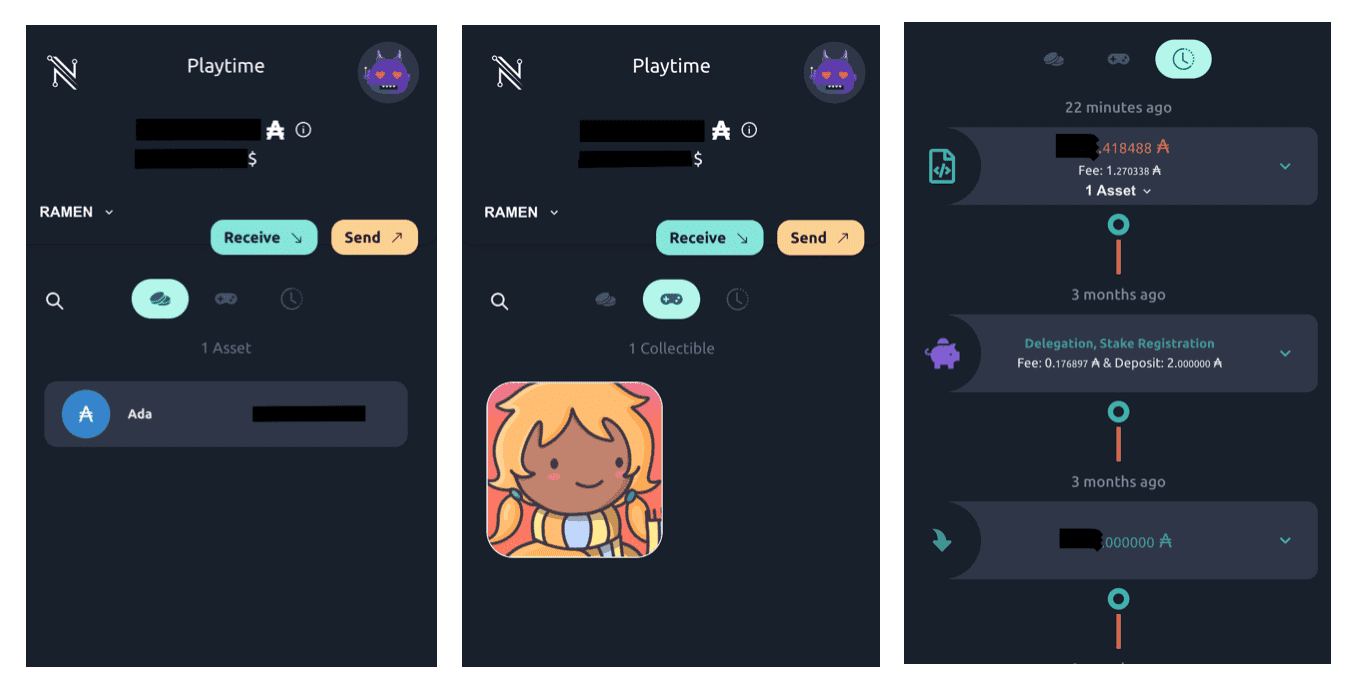
NFT Buying and Sending
Using the wallet to buy and send NFTs is also a breeze. Just connect the wallet to the marketplace, click Buy NFT, then Confirm, key-in password and the transaction is done. Sending an NFT is the same as sending a token.
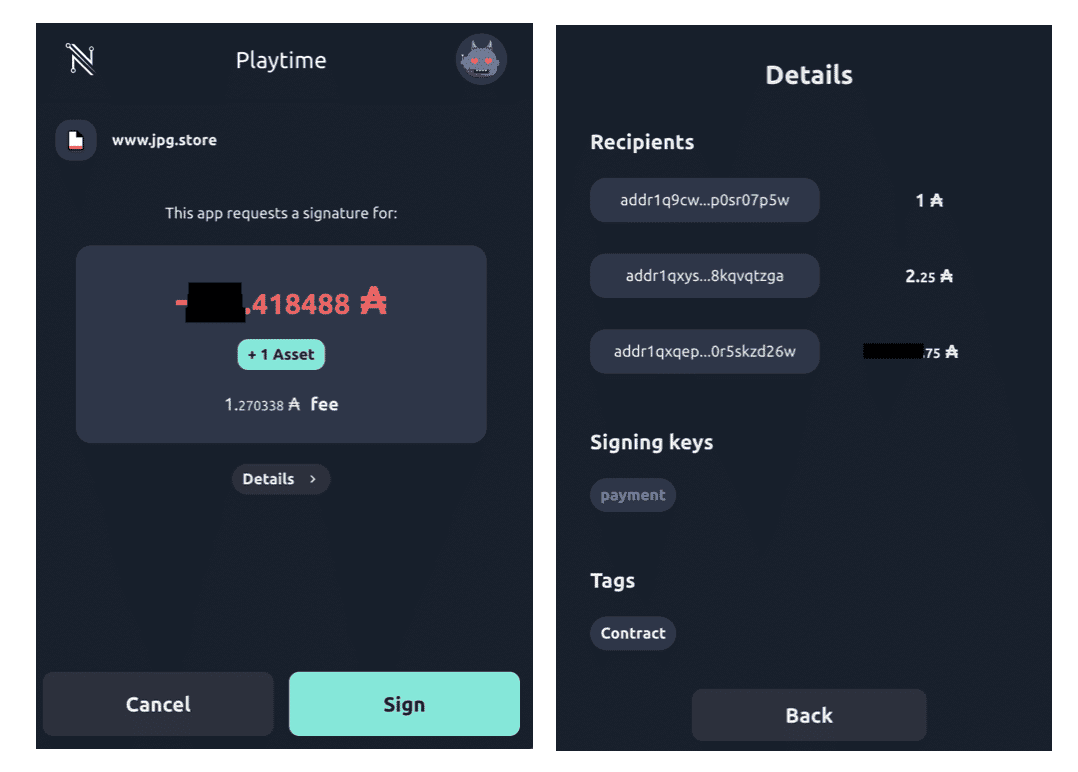
Stakepool Delegation
Cardano was one of the first to offer staking through a wallet when Daedalus came out in 2015. With Daedalus, you can select the list of stake pools directly within the app. Nami allows you to stake in two ways:
- Directly within the wallet but only to Berry Pool - the stake pool operated by the wallet's creators.
- Through a stake pool website like PoolPeek.com.

Connect the wallet to the stake pool site, select the pool you want to stake with and click Join. It's worth noting that there is a 2 ADA withdrawal minimum to collect the rewards from the stake pool.
Collateral
The wallet also allows interaction with smart contracts like minting NFTs. To do that, you need to put up collateral in the wallet. This is done by accessing the settings via the profile pic.

The reason for the collateral is because "...Only the node that produces the block verifies the contract fully. In the event of a contract failure, collateral is taken to cover the resources (CPU and memory) used by the node to verify the contract. When a script runs successfully, the collateral is not taken.", according to the FAQ section on the wallet's home page. It also prevents malicious actions like spamming on the network. This is in contrast to normal transactions that get failed before even hitting the network in case of abnormalities.
If anything bad were to happen, you'd only lose 5 ADA, which is at least a sustainable loss to many given its price now.
Security Measures
Like most wallets, Nami also allows you to connect your hardware wallet with it for additional security. This means that when you want to withdraw from Nami, you'd need the hardware wallet to authorise the transaction.
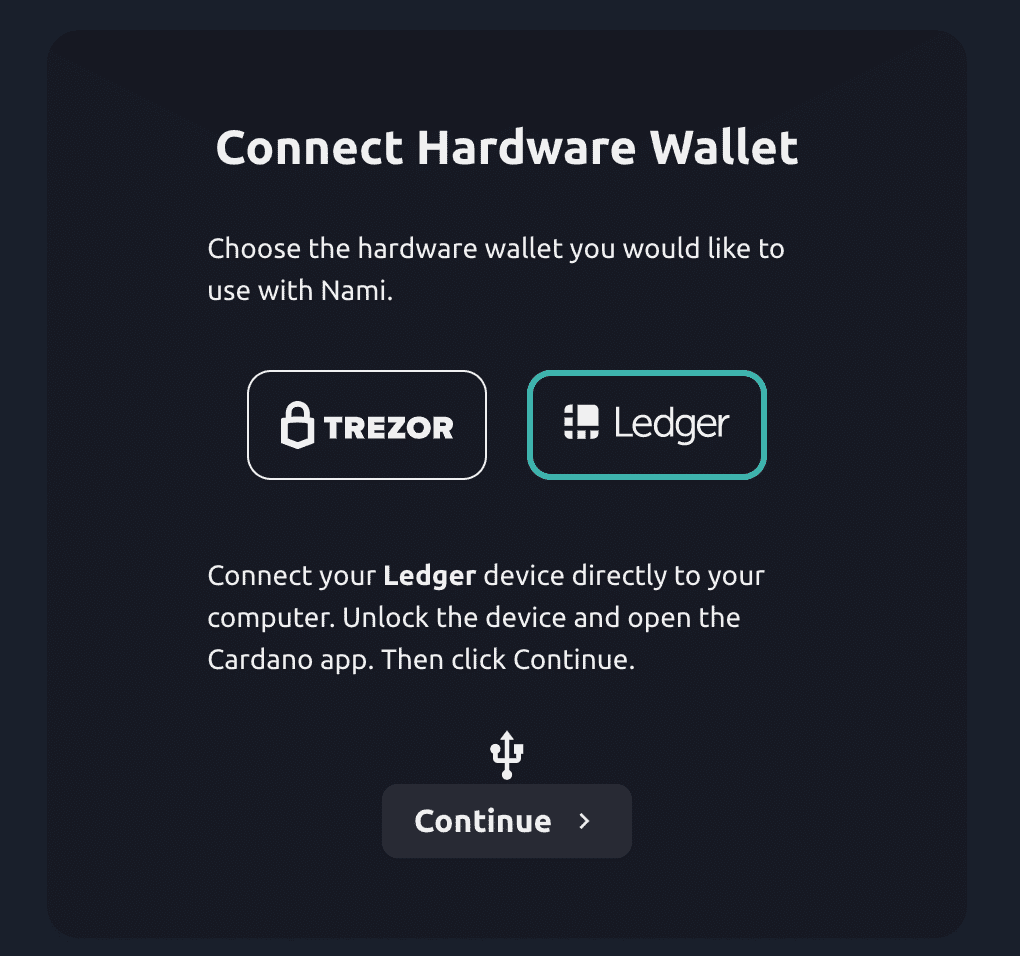
In addition, Nami is also one of the few hot wallets I've seen that uses a 24-word seed phrase. Even Metamask uses only a 12-word seed phrase. This, plus the hardware connection, makes Nami as solid in security as a browser extension can be. Minimal attack surface, as one would say.
Settings
There are three main sections for configuration in Settings. General settings are where you can change the profile avatar and toggle between light and dark themes and between USD and EUR. The Whitelist Pages is which pages have access to the wallet, which usually requires a Signing transaction to enable access. Finally, the Network section is for you to toggle between Mainnet and Testnet. You can also set up a custom node if so inclined.

Why Custom Node?
Daedalus is a full node wallet. You will get the complete copy of all Cardano transactions downloaded into your machine through it. That's a lot of data. If you're not in the validator business or involved with the blockchain's security, there's no reason to have it in your machine. On the other hand, light nodes are mainly used for checking whether transactions are on a block or not.
If you run such a node, you can set this up in the Nami wallet so that it doesn't rely on the node used by Nami, which is Blockfrost.io in this case, to check the balance in your wallet is correct.
Verdict
Nami is a no-frills wallet equipped to handle all your wallet needs as you navigate the Cardano ecosystem. The UI is clean and simple, with touches of quirkiness that make it appealing for all types of users. While it is unfortunate that there isn't a mobile version currently, there are plans for one in the future. I recommend Yoroi for anyone looking for a mobile Cardano wallet.
The wallet itself is still a work in progress as more features are added, both for developers and users. As for now, it's my go-to wallet for interacting with the Top Cardano dApps.
Disclaimer: These are the writer’s opinions and should not be considered investment advice. Readers should do their own research.


